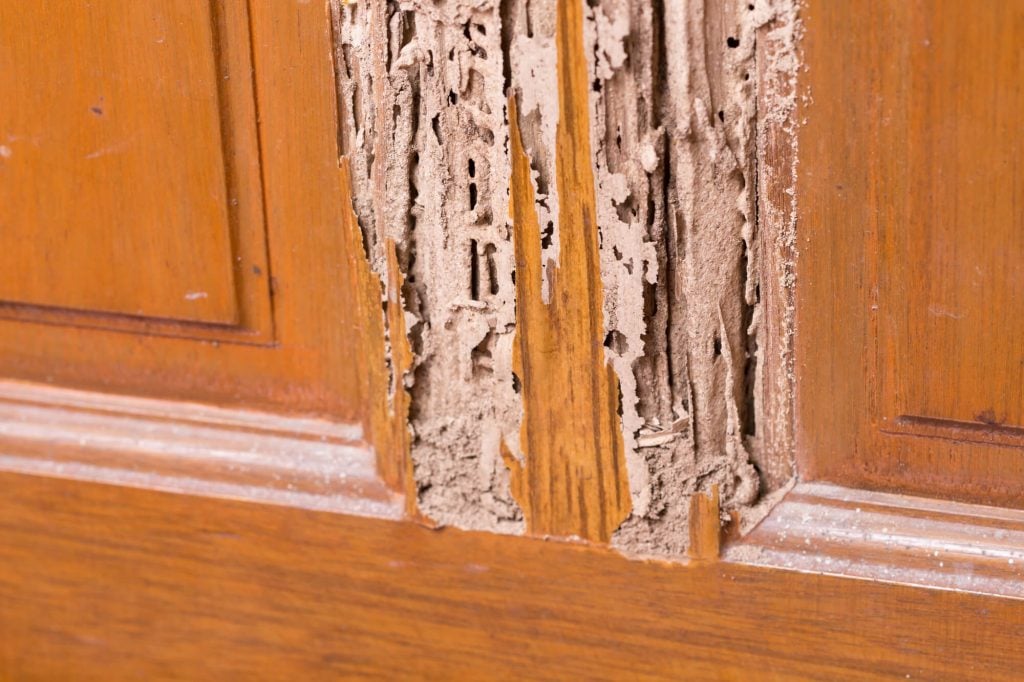Termites are primarily known to devour timber and wood in the outside of a home. However, these destructive insects can also be quite a nuisance to your wood furniture in the interior of your property, if not adequately controlled. Once they infest your home, termites can cause damage to any wooden furniture they come across, including chairs, tables, bookcases, and antiques.

Unfortunately, it is difficult to notice these termites when they begin to infest your home. So how do termites get to your furniture, and how do you get rid of them? This guide explains how you can deal with termites in your furniture.
Types of Termites to Watch
There are 2 primary types of termites that attack furniture. These include the subterranean termites and dry wood termites.
Subterranean Termites

These termites are popularly found in the walls of a property or in beneath wooden foundations. Subterranean termites thrive well in moist environments, and they are considered to be the most destructive termites. These termites rarely attack furniture due to their need for moist environments. However, furniture placed in the exterior of a house or around damp conditions is a target to subterranean termites.
Drywood Termites

These termites thrive well in warm conditions, and they can be found around any wooden structure, including woodwork, wooden frames, and furniture. Drywood termites can gain access to your home, especially when swarming, giving them to infest your furniture. These termites are hard to identify, which is why you should be aware of the signs to look out for.
Signs of Termites in Furniture
When it comes to pest control, it is fundamental that you identify their breeding or thriving points. The following are signs of a termite infestation in your house furniture;
1. Mud Tubes

This is one of the primary signs of subterranean termite infestation. These mud tunnels can be traced on the bottom edges of the house where the wall meets the floor. You can also trace them on walls or beneath furniture, especially the outdoor furniture.
2. Faecal Pellets
If you notice faecal pellets beneath or around your furniture, it is an indication that your furniture is at risk of a termite infestation. The faecal pellets are wood-coloured, and can easily be traced in piles.
3. Cracks and Crevices
Unexplained crevices or cracks on the furniture finishes are also a sign of a termite infestation.

4. Shed Wings
When termites infest your house, you might notice wings shed by termite swarmer around the windowsills or on the floor.
How Would the Termites Get in Your House?
Sometimes it is difficult to comprehend how termites got into your house. You will be surprised to discover the multiple ways through which termites find their way into your property.

• Movement in Purchase
Sometimes furniture is not the only thing you get when you buy some pieces of furniture, especially second-hand purchases. The termites might have come along with the purchased furniture.
• Transfer by Contact
If your furniture comes into contact with other infested furniture, then termites might have moved from there.
• Damp Environment
If you are still using furniture that was rained on or soaked in a snowfall, then that could have attracted subterranean termites to your house.
How to Get Rid of Termites
It is advisable to always seek help from a professional pest control service provider, such as Excel Pest Services to get rid of termites. But in case the termite infestation is less severe, you can apply the following tips to get rid of these destructive pests.
1. Expose Your Furniture to Sunlight
Regular exposure of your furniture to sunlight is one of the best ways of getting rid of subterranean termites. This method prevents further termite infestation by reducing the moisture content around furniture.
2. Chemical Treatment
You can also use various chemical treatment methods to kill termites. One of the most popular termite killers is borax powder. The good thing with borax is that it is non-toxic, and it facilitates an immediate eradication of termites when applied severally.
3. Go for Parasitic Nematodes
Nematodes are tiny worms that feed on termites by burrowing into them. This method is safe and quick in getting rid of termites.

4. Oil Treatments
Various oil types, such as neem and orange oils are also effective in getting rid of a termite infestation. You can either spray or pour these oils on the affected parts of the furniture for better results.
Keep Reading:

